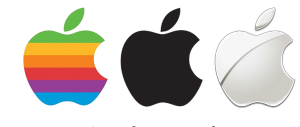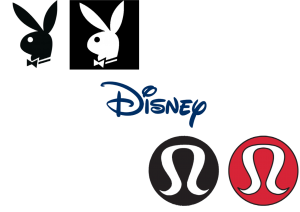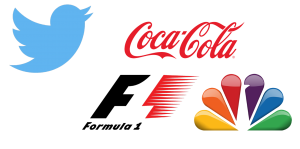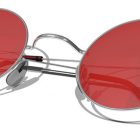The 8s
Logo: A Logo Is Worth a Thousand Words
July, 2016
Every good logo tells a story. In fact, your logo is often the first introduction that potential customers have to your business and, therefore, needs to be able to stand on its own as your front-line brand ambassador. Tall order? A little, but with more and more customers wanting to feel a connection to the brands they support, the role of your logo as a brand ambassador becomes increasingly important. So what makes a logo a good logo? And just how does it tell your story? Here are 8 tips to consider…
1. Ask the Whys
Why do you have a logo? Who does it target? What is its purpose? If you can answer these deceptively easy questions, you are well on your way to creating a great logo. Time spent figuring this out is probably the single most valuable thing you can do when considering logo design. And don’t forget: since every good logo tells a story, yours should be filled with meaning (both obvious and hidden) and even occasionally whimsical—did you know the Apple logo has a “byte” missing?
2. Keep It Simple
Name the first three logos that pop into your mind, and chances are they are clear and uncomplicated (at least on the surface). Simple but powerful logos almost always prove the best at standing the test of time. Trust in that.
3. Logotype vs. Logomark
 People often confuse a logomark (think Nike’s swoosh) with a logotype, which uses the name of the brand rather than a symbol or icon (think Google or Disney).
People often confuse a logomark (think Nike’s swoosh) with a logotype, which uses the name of the brand rather than a symbol or icon (think Google or Disney).
A logotype is often the easiest and most all-around logo to use since it identifies the name of the company or product, as well as expresses the brand. But it is also often bulkier and is sometimes more difficult to use in situations where something smaller and simpler would work better.
A logomark can help enhance brand identity. This is especially true if your mark happens to be a representation of your product or service. And if a logomark is marketed correctly, it can often be more identifiable than a logotype, as exemplified by the Apple or Lululemon logos.
4. Shape, Proportion & Symmetry
 Where does your logo need to appear? If you do a lot of sponsorships, the logo will often appear at the bottom of a sign or poster, along with a lot of other logos. Do you have (or want) a strong web presence? Will your advertising strategy involve TV? How about print? The shape and proportion of your logo may affect how it fits in different applications or media, so try out the basic shape in as many situations as possible.
Where does your logo need to appear? If you do a lot of sponsorships, the logo will often appear at the bottom of a sign or poster, along with a lot of other logos. Do you have (or want) a strong web presence? Will your advertising strategy involve TV? How about print? The shape and proportion of your logo may affect how it fits in different applications or media, so try out the basic shape in as many situations as possible.
A symmetrical logo is aesthetically pleasing and will encourage more symmetry in whatever application it’s used in. Asymmetry can carry a complexity that communicates different emotions—anything from laid-back to intense or moody. There is no right answer, but take a moment to carefully consider the implications.
5. Colour & Tone
 Make no mistake, your colour choice will communicate ideas. Lego’s red, for example, reflects passion and energy, Starbucks green speaks to nature and freshness and Intel’s blue conveys professionalism and sincerity. Consider your message before committing to a colour choice.
Make no mistake, your colour choice will communicate ideas. Lego’s red, for example, reflects passion and energy, Starbucks green speaks to nature and freshness and Intel’s blue conveys professionalism and sincerity. Consider your message before committing to a colour choice.
Remember, too, that for a logo to be really useful, it needs to work in black and white or even in reverse (as white on a dark background). So colour should be the last decision you make.
6. Active vs. Passive
Consider your business and consider your brand. Should your logo convey a sense of movement and activity? Red Bull’s charging bull and Twitter’s flying bird are both instilled with motion and energy, which complements their brands. What do you want your potential customers to feel?
7. Negative Space
 Don’t forget that the shapes in your logo can often convey more than one image. The right facing arrow embedded in the FedEx logo is the classic example of using negative space to add meaning. But also consider the simplicity of the white peacock in NBC’s rainbow of tail feathers or the clever “1” in the Formula 1 logo. Used correctly, negative space can allow you to add more elements to the design without increasing the complexity.
Don’t forget that the shapes in your logo can often convey more than one image. The right facing arrow embedded in the FedEx logo is the classic example of using negative space to add meaning. But also consider the simplicity of the white peacock in NBC’s rainbow of tail feathers or the clever “1” in the Formula 1 logo. Used correctly, negative space can allow you to add more elements to the design without increasing the complexity.
8. Consider Custom Type
When it comes to good logo design, a typeface should be unique. A custom, hand-drawn typeface is always better than something standard or that you download off the Internet—just take a look at the timelessness of Coca-Cola. A custom type helps ensure that your unique logo will stay that way. But if you can’t afford a completely custom font, at least customize any pre-existing font to make it your own. t8n
8 Biggest Logo Mistakes
1. Overdoing the special effects. More is not better.
2. Using too many fonts. Use one or two at most.
3. Not considering its scalability. Does it work as well tiny as it does on
a billboard?
4. Being too trendy. Don’t just jump aboard the bandwagon—stand out!
5. Being too abstract. Don’t leave your customers guessing.
6. Leaving it to an amateur. Cousin Bob may be cheap, but you inevitably get what you pay for.
7. Relying on stock art. It’s the quickest way to look like everyone else.
8. Relying on colour to be effective. All too often, colour is a luxury you can’t afford.
Always Consider This
If in doubt, leave it out. If you can’t rationalize something in your logo, chances are it should be removed. When your logo is at its simplest, it’s probably at its strongest. Be ruthless.












